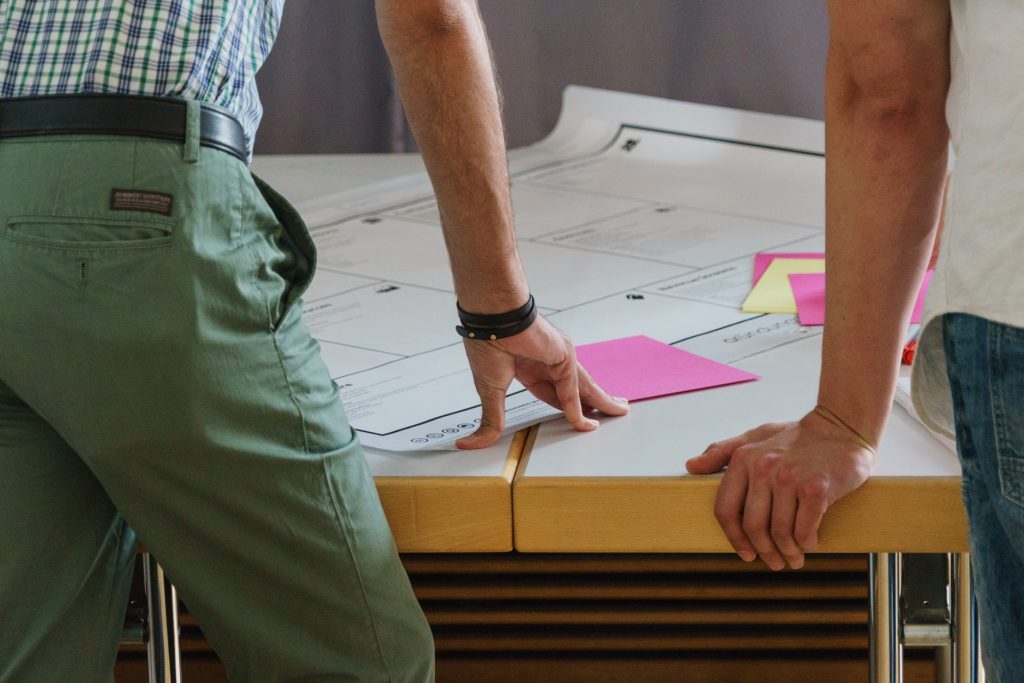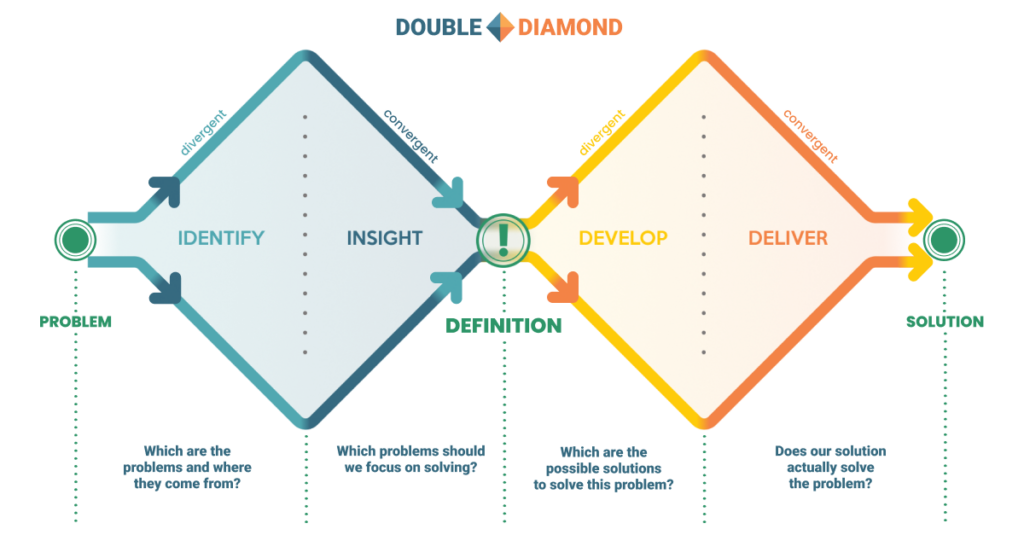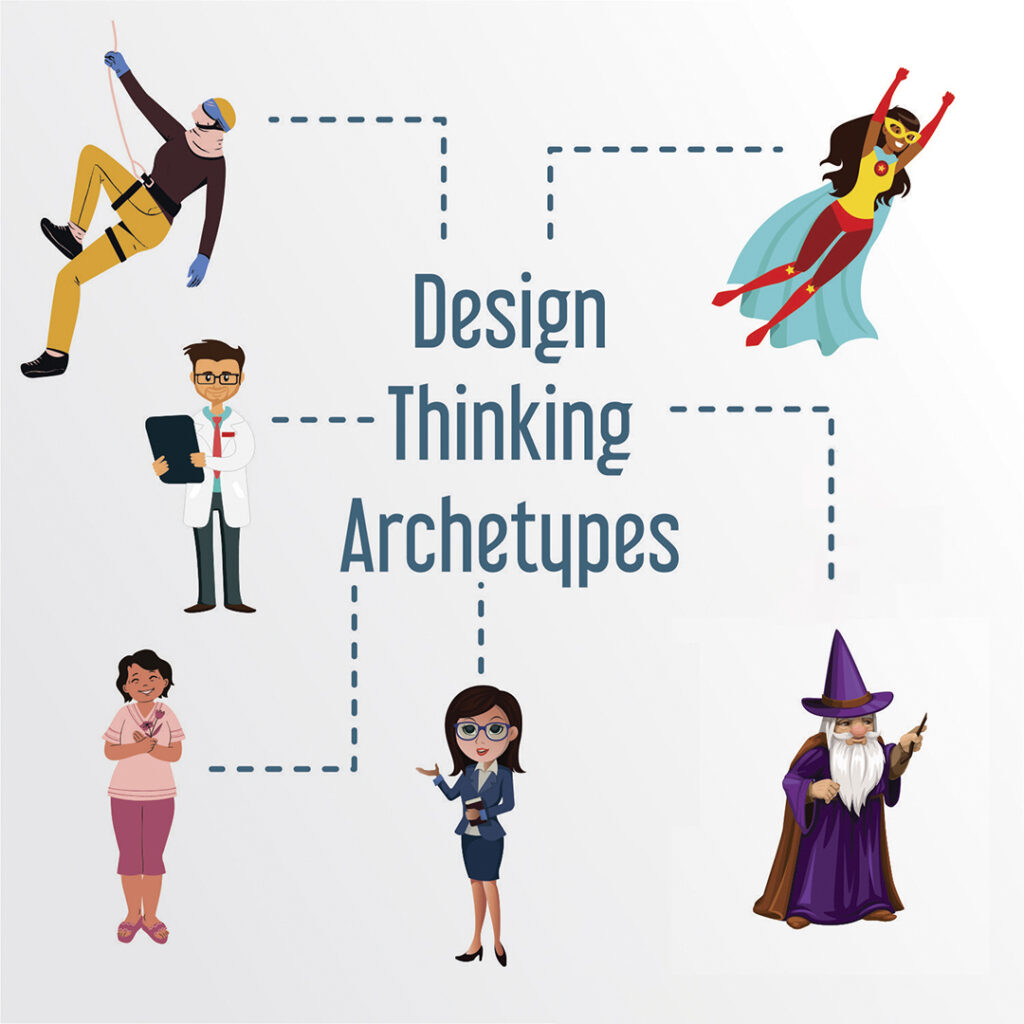Design Thinking is one of those fancy expressions we see all around the internet. But did you ever take the time to understand what it means and how it could help your business?
What is design thinking?
Design thinking is the process of finding new and innovative solutions by trying to understand your customers’ points of view.
It can be understood as a method or process that gathers insight and data about someone with a problem, their pain points, and the many ways to solve it. In other words, it is the process of figuring out what problem your client has that you can solve innovatively.
This process can help you understand the mindset and needs of your consumers. This means you need to be able to put yourself in their shoes and understand their pains.
When you identify a specific problem that frequently occurs in your clients’ lives, we call it a pain point. But because there is more than one solution to every problem, we can understand design thinking as something that balances or biases, promoting creativity to explore different things.
It has become so important that companies have dedicated creativity teams to explore new products and services.
Design thinking application
In a highly competitive industry, design thinking is important to improve the process and differentiate a company. Design thinking’s integration allows companies to have a highly productive dynamic with new problem-solving methods, creativity, and participants aligned around goals.
Always focused on users’ needs, design thinking reduces risk by learning with old failures, while it inserts the project in a new competitive logic of business strategy. With that, team communication and project development can work together to achieve new levels of competitiveness.
Applied design thinking in business problem solving incorporates mental models, tools, processes, and techniques such as design, engineering, economics, the humanities, and the social sciences to identify, define, and address business challenges in strategic planning, product development, innovation, corporate social responsibility, and beyond.
By adopting different approaches to the problem-solving process, what includes design thinking, it is possible to fill critical gaps in organizations. Only by combining the hard and soft management of the organization structure it is possible to establish competitive and complete bodies of insight, resulting in holistic learning experience with meaning, validness and practice to all people involved.
More than just selling something new
The main difference in design thinking from other invention processes is shifting focus from business-centered engineering solutions to customer-centered solutions.
Gathering your team in a room and brainstorm ideas can be useful sometimes. Yet, instead of inventing a product based on assumptions, design thinking invites us to study cultural phenomena, observe how people behave and think and gain insight into what they need from a solution.
The Hasso Plattner Institute of Design at Stanford describes design thinking as a five-stage process:
- Empathize
- Define
- Ideate
- Prototype
- Test
This process is always non-linear, meaning these steps can occur at any time. You can test after each step and pivot to make changes.
Design thinking also includes an anthropological understanding of how the target group views, communicates and uses the product or service and the best ways to improve related activities and reactions. It may take more time, but it also can create an effective product.
If you are a business owner, you are in the business of solving people’s problems. But do you know what they are?
Abrisuite can help you. To put design thinking into your organization, you need first to understand your market and your own business. Book a Digital Maturity Level assessment and start innovating.




